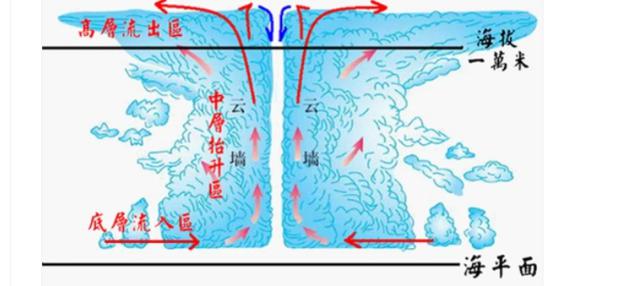Typhoons and hurricanes are strong tropical cyclones produced in tropical oceans on. We called them differently because of their different locations where they happen. In the western north Pacific, west of International Date Line and within the scope of the South China Sea, the tropical cyclones are called typhoons; In the Atlantic or eastern north Pacific, tropical cyclones are called hurricanes. That is to say, in the United States, it is hurricane, and in the Philipines, China, Japan, it is called typhoons.
A typhoon often is accompanied by strong winds and heavy rain weather. The wind spins counterclockwise. Isobar and isothermal are approximately like a set of concentric circles. The central pressure is the lowest while the temperature is the highest.

Seen from the structure of the typhoon, such a huge monster must have unique forming conditions:
First, there should be a wide range of warm and humid atmosphere. Bottom temperature in tropical ocean and humidity of the atmosphere are mainly decided by temperature on the surface. The typhoon can only form on warm ocean surface with temperature above 26 ~ 27, and temperature of water within 60 meters deep must be higher than 26 ~27℃.
The second is the initial perturbation of the center convergence of lower atmosphere and the high level outward diffusion. Moreover, the high-level divergence must exceed the low-level convergence to maintain sufficient updrafts so that the low-level disturbance can be continuously strengthened.
Thirdly, the vertical wind speed difference can not be too large. Only when the relative motion of higher and lower air is very small can we make the latent heat released by initial disturbance of water vapor condensation focuse on the air column of the typhoon eye area, forming and strengthening the typhoon center structure.
Fourth, there should be engough Coriolis force. The earth's rotation is favorable for the formation of cyclonic vortices. The deflecting force is close to zero near the equator, increasing toward the north and south poles, and the typhoon takes place on the ocean about five latitudes above the equator.
Classification
Super typhoon: the maximum average wind speed near the bottom center is over 51.0 meters per second or level 16 or above.
Strong typhoon: the maximum average wind speed near the bottom center is 41.5-50.9 m/s, or level 14 to 15.
Typhoon: the maximum average wind speed near the bottom center is 32.7 ~ 41.4 m/s, or level 12~13.
Strong tropical storm: the maximum average wind speed near the bottom center is 24.5 ~ 32.6 m/s, or level 10~11.
Tropical storm: the maximum average wind speed near the bottom center is 17.2 ~ 24.4 m/s, or 8 ~ 9.
Tropical depression: the maximum average wind speed near the bottom center is 1.8~ 17.1 m/s, or level 6~7.

Comment list ( 0 )
